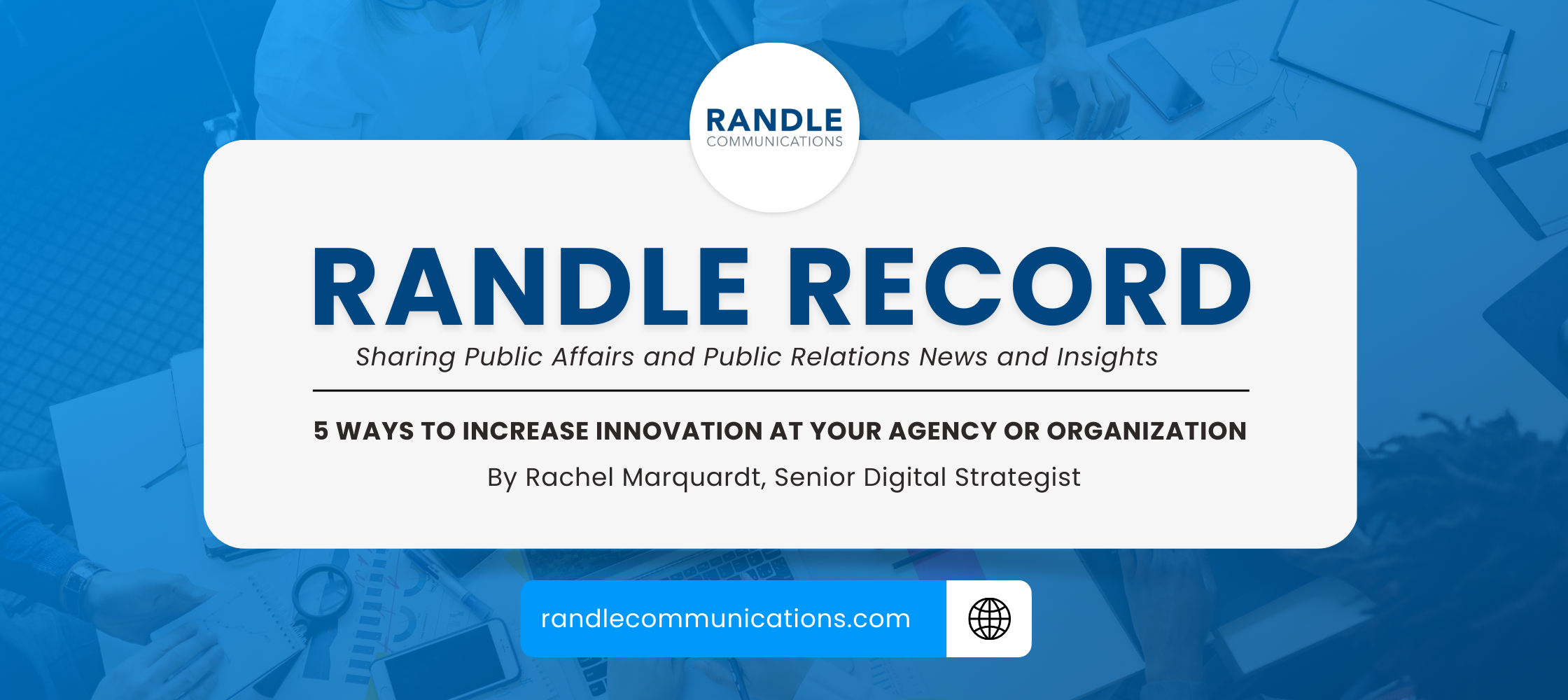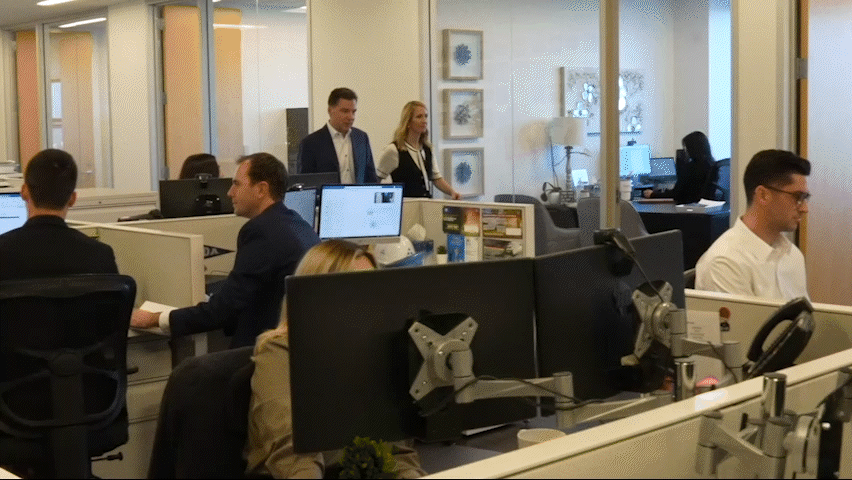
By Rachel Marquardt, Senior Digital Strategist, Randle Communications
The hustle and bustle of agency life includes full schedules, complex projects and client objectives, and professionals with diverse strengths and skill sets. The landscape doesn’t easily create space and time to pursue new ideas and breach the innovative frontier, but as the digital world continues evolving, it’s critical agencies ensure their teams are positioned to maximize new technology, ideate and problem-solve while still supporting their clients with industry-leading services.
Here are a few tips that could benefit your agency as you work to weave in time for innovation for your busy team.
1. Embrace Strategies to Turn Pressure into Productivity
Did you know that individuals are most creative at a specific time of day? It’s science – when the brain is overwhelmed, it leaves no room for creativity. This may give readers who are in the agency world the urge to stop reading this article altogether because it can be difficult to unclutter your mind when there is consistent pressure to provide the highest quality work for clients. The answer is this: Harness pressure into productivity.
When stress becomes overwhelming, something neurologists refer to as “downshifting,” a state of fight or flight occurs where your brain’s pathways are not open to creative ideas, only ideas that will support survival. However, there are ways to “upshift” your brain out of this state and into a state of creativity and productivity, according to Leading Crisis Management Expert Ben Ramalingam in his book “UpShift.”
There are a few things you can do to upshift your brain and turn pressure into productivity, including:
- Reset your mind by taking a quick walk or getting a breath of fresh air
- Work in a different space of the office than usual for a period of time (if in person)
- Meditate or practice deep breathing
- Use a grounding technique such as a stress ball, journal, or inspirational quote to take your brain away from a stressful task
- Let a digital or on-paper to-do list take ownership of keeping track of your day-to-day tasks, so your brain has more room for creativity
These disruptions to your standard flow or routine will give your brain the opportunity to upshift.
To learn more about upshifting, check out the book “Upshift” by Ben Ramalingam.
2. Optimize Your In-Person or Virtual Collaboration Time
Brainstorming – a concept initially invented by Alex Osborn in the 1950s – is best done together in an inclusive, undistracting environment. This means setting aside other tasks to focus on one goal, together, whether in a virtual setting or in person. Optimize your in-person or virtual collaboration time by scheduling 30 minutes to 1 hour for your team to brainstorm solutions to one challenge without any other agenda items or distractions. At Randle Communications, we value using our brainstorming space to set aside focused ideation sessions where we don’t let other client items or tasks interfere.
3. Encourage Diverse Perspectives to Generate Ideas
There is great value in incorporating diverse skills and perspectives into a team who is looking to problem-solve. Unlike what some may believe, it isn’t the similarities between team members that hold the most value but their differences. This means different backgrounds, departments, skills, and levels in your organization too. It takes multiple personalities, ideas, and perspectives to achieve goals and see innovative ideas through.
There are many helpful tools for helping people pinpoint their productive personalities and where they best fit when it comes to innovative problem-solving. For example, is there someone in your office who is an endless idea generator? Or how about someone who likes to take a plan and jump in to make things happen? These people are just some of the many puzzle pieces that fit to make an innovative team.
Many people believe it is an innate personality trait to be innovative or be a “problem-solver,” but that is truly not the case. This means when you’re assembling your project teams or bringing people together to solve a problem, even someone who may not feel like they have the “innovative” gene might have the perfect piece to finish your team’s puzzle. If you’re interested in learning how your team can harness their skills and personalities in the workplace, check out FourSight, or The Ten Faces of Innovation by Tom Peters.
4. Quantity Will Lead to Quality
You have the team, you’ve set aside the time. But how do you plan a productive brainstorming session? When it comes to brainstorming ideas that will lead to innovative solutions, quantity will lead to quality. This concept was coined by Osborn and has been researched and confirmed by multiple creativity, innovation, and behavior researchers.
In order to develop quality concepts from a quantity of ideas, here’s a quick sequence to try in your brainstorming sessions:
- Define your challenge, or the problem you are hoping to solve.
- Have your team individually write down as many ideas as possible.
- Have each team member add their ideas to a whiteboard, or a virtual list for the team to see.
- Begin discussing which of the ideas are most viable. Can multiple ideas connect? Do some of the ideas spark others?
- From there, pick the idea or ideas the team wants to move forward with, and begin making a plan to address your problem.
Practice omitting the word “no,” from these brainstorming sessions, as someone’s “no” might be a YES from a differing perspective, or could pair well with another idea.
5. Create an Innovative Space… Physically.
This last section is for teams with a hybrid working schedule or mainly work in-office. If your space is drowning in division due to a large number of physical dividers, consider reimagining a part of your office space for your team. Prioritize building a common space for brainstorming and creativity. Here are a few suggestions for building out your collaboration space:
- Incorporate a White Board: This will help increase collaboration by allowing the team time away from screens and with each other.
- Make it a Comfortable Space: Swap out the swivel chairs for couches and make sure there’s enough for the group, big or small.
- Place it in a Prominent Location: If your workspace allows it, select a location that is easily accessible and people pass by frequently.


